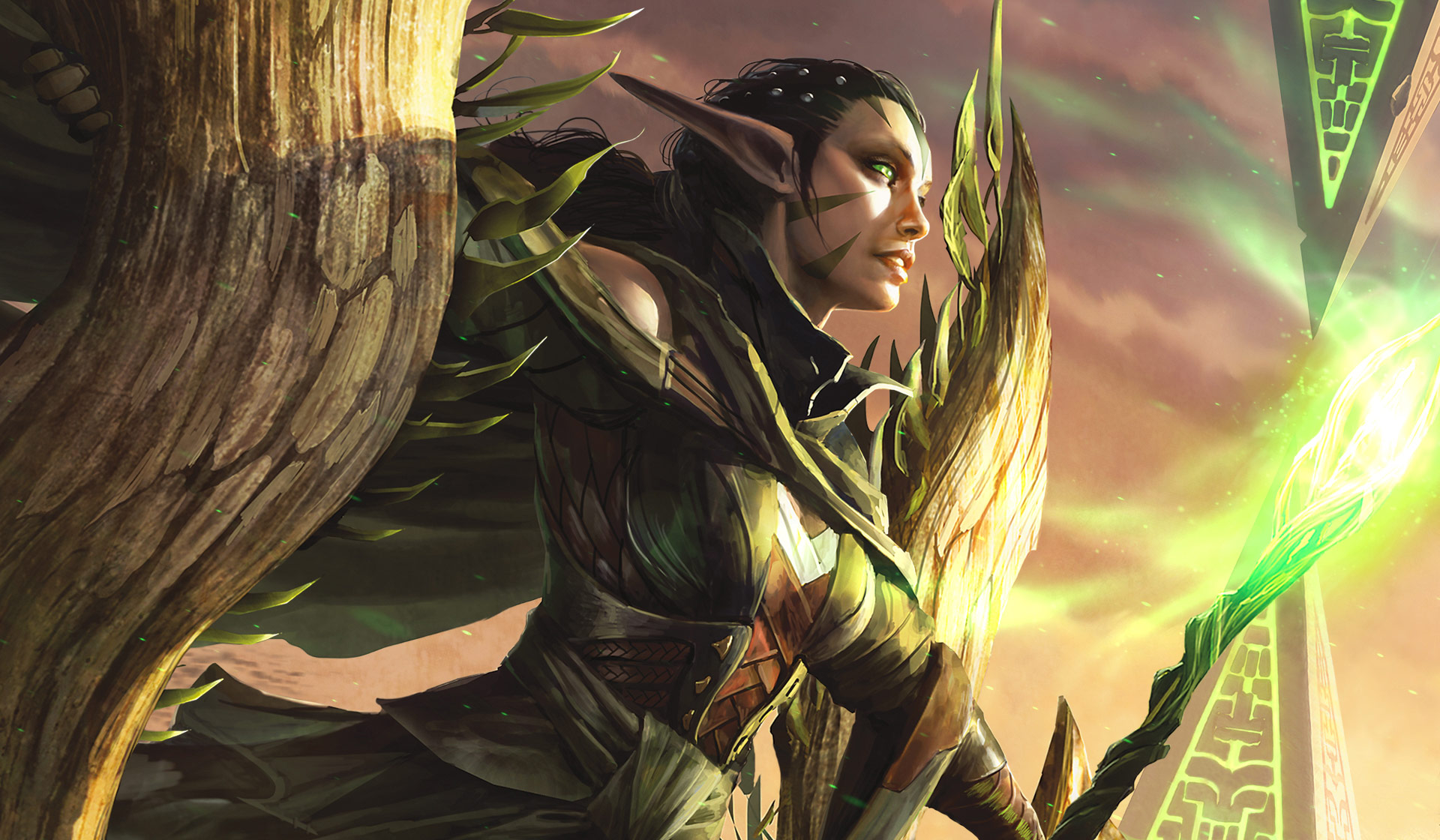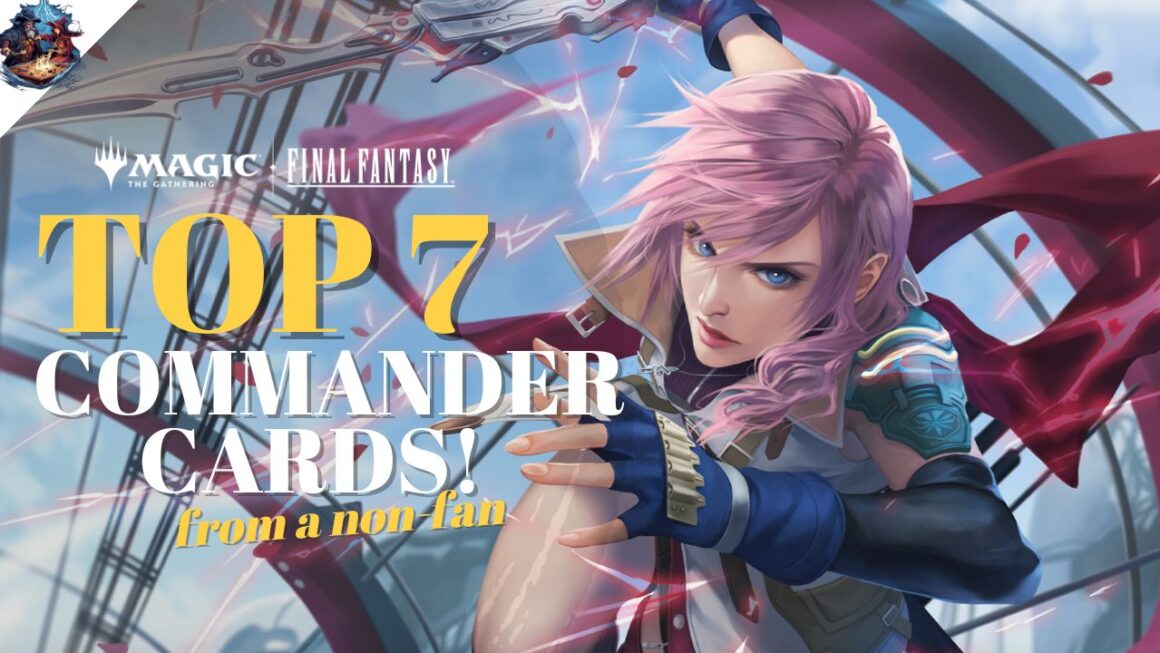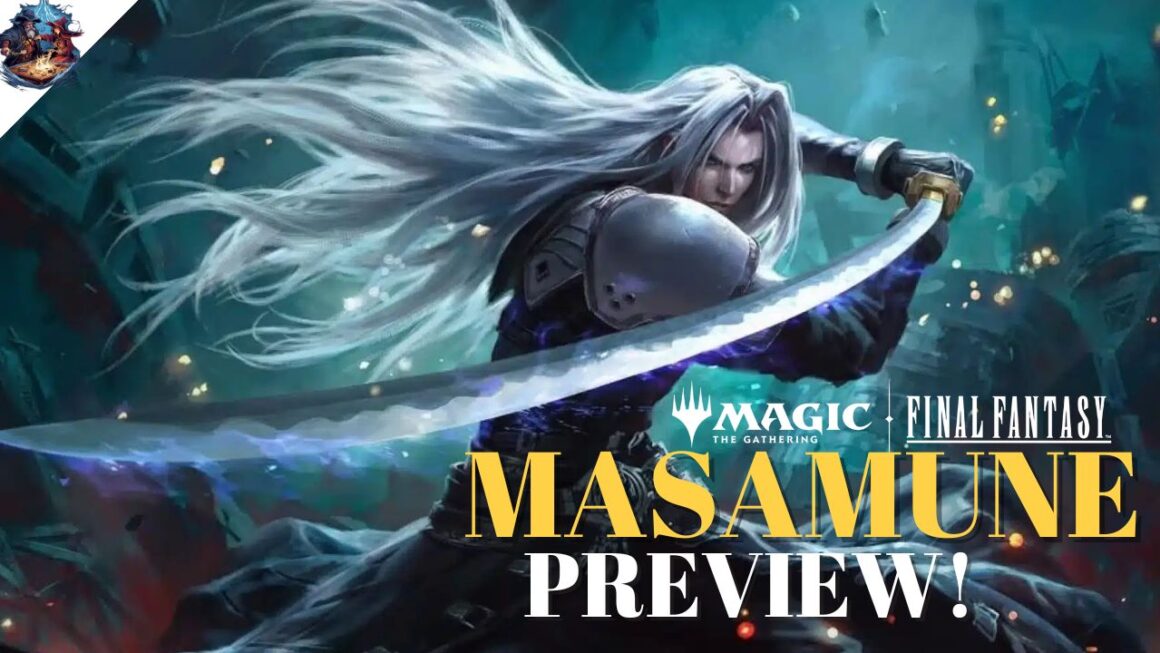With the recently released Zendikar Rising, it’s a good idea to go back to the fundamentals and look at something the Plane is known for – Lands! In the first of this multi-part series we’ll be looking at the Basic Lands of the game, OG (original) Duals, Fetches and Shock Lands. These are the most commonly-used or versatile Lands in the game.
Basic Lands: Where Life Begins
Without Basic Lands – the very foundation of Magic: the Gathering – there simply can be no magic. There are five Basic Lands, and each produces a single coloured Mana.
Plains: White Mana ![]()
Island: Blue Mana ![]()
Swamp: Black Mana ![]()
Mountain: Red Mana ![]()
Forest: Green Mana ![]()
The Land system of MTG has been a contentious topic for debate over the years. The inability to draw Lands can cause a World Champion to lose against a one-month-old player. Yes, Lands are that important. (And frustrating?)
Why Care About Lands?

Some players don’t find Lands to be particularly interesting, what with all the fancy spells flying around. However, the more experienced players know that the power beneath the mana bases available are indicative of the speed and power of any format. Lands that enter Tapped essentially slow the player by an entire turn can be back-breaking in faster formats.
Lands can also eat a big part of a player’s budget. Giving consideration to budget Mana Bases can ease entry into eternal constructed formats.
The Bare Basics of Mana Bases
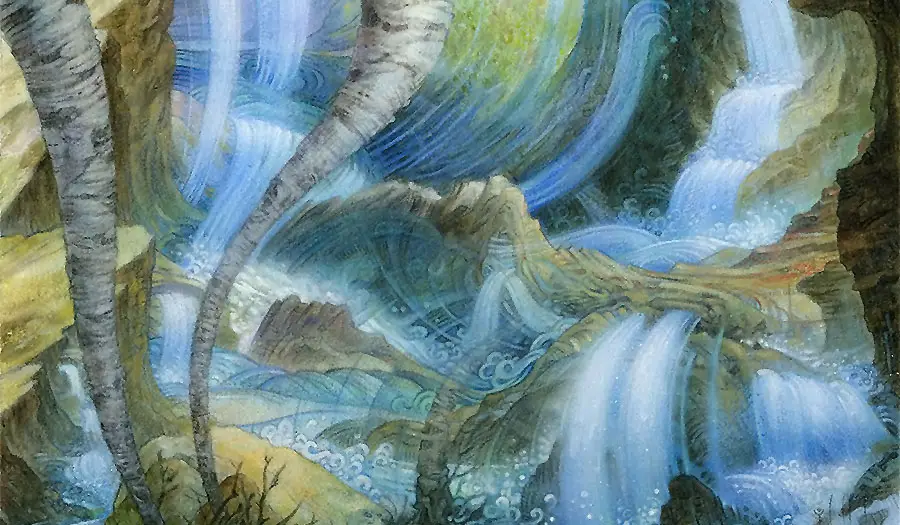
The Mana base’s primary role is to allow a player to cast their spells “on curve” and also not have them “flood out” on mana. The generic rule of thumb is that a 60-card Constructed deck has roughly 24 Lands to ensure that Land drops can be made and a sufficient density of threats and answers can also be included.
A faster, low-to-the-ground deck will have less (20-22 Lands) while midrange/control decks will typically run more (25-26 Lands). This is also linked to the average CMC (converted mana cost) of the deck. For an in-depth explanation, you might want to check this article on Channel Fireball.
Spells may also be disproportionately powerful depending on when they are played. Thoughtseize is such a card. A turn-one Thoughtseize on the play often slows the opponent down by several turns as the game plan they had in hand often just falls apart. You have to make sure that your Mana base lets you cast the spells you want, when you want to.
To address the needs of multi-coloured decks, Magic: the Gathering provides players with a wide plethora of multi-coloured Lands. Let’s start with the most powerful non-Basic Lands that allows you to access two different coloured Mana.
OG Dual Lands

The most powerful Lands in MTG are the original Dual Lands. There are 10 in the series, with Underground Sea, Volcanic Island, and Tropical Island a few of the more popular ones.
They’re exceedingly powerful for fixing colours early in the game, have Basic Land types (i.e. Forest, Island etc.) and thus can be found with the appropriate Fetch Lands. Dual Lands are highly effective for greedy Mana bases which need different colours of mana early on.
They are only legal in Vintage, Legacy and Commander (EDH) and come with a hefty price tag. They will also never be reprinted so long as the “Reserve List” promise is adhered to.
Nothing much else to be said here. They’re powerful and have no downside other than a hefty price tag of roughly US$200-600 each, depending on their colour combinations.
Fetch Lands

The cornerstone of many Mana bases in Modern and Legacy formats are the Onslaught and Zendikar Fetch Lands. For the low price of 1 life point, Fetch Lands can fix your mana for the rest of the game by “fetching” the appropriate land holding a basic land type. Fetch lands are banned in the Pioneer format, despite being part of the legal set list. They are also not legal in Standard format.
Here’s a great video introducing Fetch Lands and its origins:
Fetch Lands also have a great degree of utility. Let’s look at how some Modern powerhouse decks can use Fetch Lands:
Fetch Land Uses: Modern Format Case Studies
Blue White Control
| Creatures (2) 2 Snapcaster Mage Planeswalkers (7) 2 Teferi, Time Raveler 3 Jace, the Mind Sculptor 2 Teferi, Hero of Dominaria Instants and Sorceries (23) 4 Opt 4 Path to Exile 1 Spell Snare 1 Logic Knot 1 Manaleak 2 Archmage’s Charm 3 Force of Negation 1 Timely Reinforcements 3 Cryptic Command 3 Terminus Enchantments (4) 3 Omen of the Sea 1 Shark Typhoon | Lands (24) 1 Celestial Colonnade 3 Field of Ruin 4 Flooded Strand 2 Hallowed Fountain 5 Island 3 Mystic Sanctuary 2 Plains 4 Polluted Delta Sideboard (15) 1 Dispel 2 Flusterstorm 2 Aether Gust 2 Celestial Purge 1 Disdainful Stroke 3 Ashiok, Dream Render 1 Teferi, Time Raveler 2 Timely Reinforcements 1 Shark Typhoon |
Jace, the Mind Sculptor is legendary for being an oppressive card in UWx Control decks. Fetch Lands provide value when used with his 0 ability. Consider, you have a fetch land on the battlefield, you activate Jace, the mind sculptor‘s 0 ability to Brainstorm, put the cards you don’t want back, and activate your Fetch Land, thus shuffling away your dead cards. This play generates insane virtual card advantage.
UWx control also plays a high density of powerful Instants and Sorceries. Cryptic Command is one such card, allowing many versatile responses to the opponent’s plays. Fetch Lands like Flooded Strand synergise with this strategy by allowing the player to fetch out a Mystic Sanctuary at “instant speed,” readying an Instant or Sorcery of choice from the graveyard for the next turn or with a draw spell/ability. If it is a Cryptic Command, the player can also bounce the Mystic Sanctuary to create a pseudo lock.
Dredge
| Creatures (24) 1 Bloodghast 2 Golgari Thug 3 Narcomoeba 3 Merchant of the Vale 4 Prized Amalgam 4 Silversmote Ghoul 4 Stinkweed Imp 3 Ox of Agonas Instants and Sorceries (13) 1 Conflagrate 4 Cathartic Reunion 4 Life from the Loam 4 Creeping Chill Artifacts (4) 4 Shriekhorn | Lands (19) 1 Arid Mesa 2 Blood Crypt 3 Bloodstained Mire 1 City of Brass 2 Copperline Gorge 1 Forgotten CCave 1 Gemstone Mine 2 Mountain 2 Stomping Ground 4 Wooded Foothills Sideboard (15) 1 Blast Zone 3 Lightning Axe 2 Nature’s Claim 3 Thoughtseize 2 Bloodghast 1 Shenanigans 2 Rotting Regisaur 1 Leyline of the Void |
The premium graveyard deck of Modern. Dredge lets the Fetch Lands fuel some of its combos. Bloodghast seems to have recently fallen out of favour, but used to be a key piece of this deck. Fetch lands could be used to alter the timing of the Landfall trigger against traditional graveyard hate such as Relic of Progenitus.
Upon playing the Fetch Land with the Bloodghasts in the graveyard, all the Bloodghasts in the graveyard would trigger, the opponent might decide to activate the relic to exile the Graveyard to attempt preventing them from entering the battlefield. This line does not work though, as fetching for the land in response to the relic’s ability would allow the dredge player to trigger the Bloodghast landfall ability in the graveyard again. The Bloodghasts can thus protect themselves from the relic’s ability.
The use of Life from the Loam also ensured that Dredge would always be able to fuel their graveyard with the dredge mechanic and fill their hand with Fetch Lands building up to a massive Conflagrate should their creatures not be able to close out the game or refill their hand with Ox of Agonas by ensuring enough cards to escape with. It also ensured that the Bloodghast trick is always available due to the ability to take the Fetchlands back every turn.
Jund
| Creatures (14) 2 Scavenging Ooze 4 Tarmogoyf 1 Klothys, God of Destiny 3 Seasoned Pyromancer 4 Bloodbraid Elf Planeswalkers (6) 3 Wrenn and Six 3 Liliana of the Veil Instants and Sorceries (17) 2 Fatal Push 4 Inquisition of Kozilek 4 Lightning Bolt 2 Thoughtseize 2 Assassin’s Trophy 2 Kolaghan’s Command 1 Maelstrom Pulse | Lands (23) 3 Blackcleave Cliffs 1 Blood Crypt 3 Bloodstained Mire 1 Nurturing Peatland 2 Overgrown Tomb 2 Raging Ravine 1 Forest 1 Mountain 2 Swamp 1 Stomping Ground 4 Verdant Catacombs 2 Wooded Foothills Sideboard (15) 1 Grafdigger’s Cage 1 Collective Brutality 2 Damping Sphere 2 Weather the storm 2 Ashiok, Dream Render 1 Klothys, God of Destiny 3 Pillage 2 Plague Engineer 1 Boil |
Jund is known for extremely powerful threats and cheap efficient answers. It needs quick access to Jund mana colours (GBR) as quickly and consistently as possible, and therefore plays many Fetch Lands. Casting Liliana of the Veil on turn 3 would be nigh impossible without the highly tuned and powerful mana base.
Three cards in the Jund core have obvious synergy with Fetch Lands.
Fatal Push is a very efficient removal spell. Powerful even without the Revolt trigger, it becomes absurd with it. Fetch Lands are an extremely easy way to trigger the Revolt mechanic, ensuring that you will often be able to cast Fatal Push at full power, generating massive tempo swings when medium sized creatures are played.
Tarmogoyf is a key threat in Jund. Fetch Lands add a card type to graveyards which “grows the goyf.” Combined with the slew of removal the deck runs, Tarmogoyf often becomes a 3/4 or 4/5 creature very quickly.
Wrenn and Six can be a turn 2 play for Jund, it picks off small creatures while remaining on the board, locking up some early plays. When its +1 ability is combined with Fetch Lands though, it combines an efficient removal engine with consistent land drops, potentially making recovery nigh impossible for the opponent.
Qualifying Fetch Lands
Fetch Lands are absolutely amazing, and come with a significant price tag due to them being a staple of competitive Modern/Legacy decks. The question is do you really need them for semi-competitive play? Verdant Catacombs is good, but at $61 each is it really 12x better than Blooming Marsh which is $5? Brew within your budget and tweak the deck to fit your needs, don’t let Lands prevent you from getting into the Modern format.
A point not prior mentioned is also that fetch lands can thin the deck, preventing dead draws when you don’t need lands any more, however some players (myself included) feel that this effect is negligible.
Shock Lands
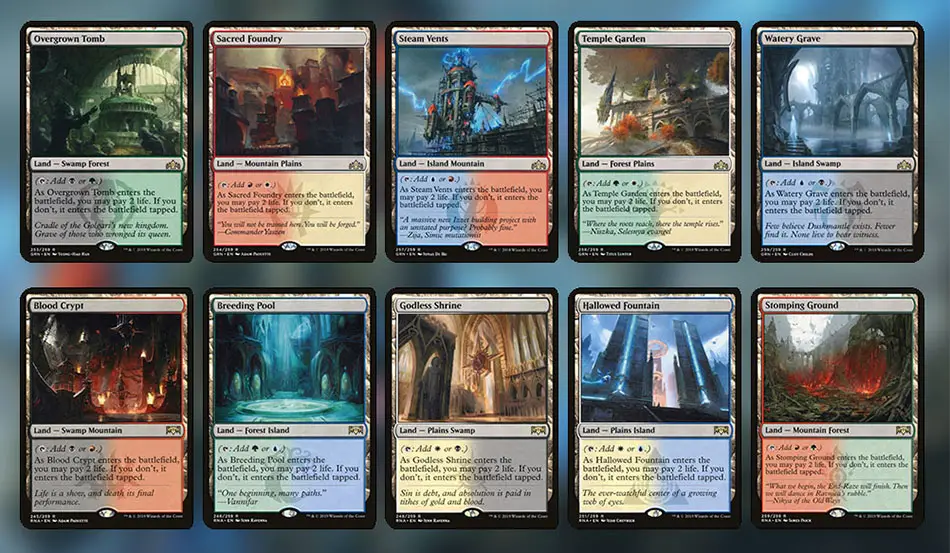
Shock Lands are essentially, the “fixed” versions of the OG Dual Lands. Retaining the Basic Land types, they can be found with Fetch Lands, and can come in untapped, providing that you are willing to pay 2 life.
Some highly sought after Shock Lands include Breeding Pool, Watery Grave, Steam Vents, and Overgrown Tomb. Thankfully, Shock Lands are also not on the Reserved List and do get reprinted every few years.
The sequence of “Fetch, and Shock” in Modern allows for consistency in powerful turn one plays for 3 Life (5 if you also play Thoughtseize immediately after) but the life loss is not an issue if you slow your opponents down by several turns or kill them quickly through the consistency of your plays with the powerful mana fixing. The “fetching” can also be done at end of your opponent’s turn if you don’t need the mana immediately, thus untapping naturally on your next turn. Great flexibility there, though it’s mostly because of the Fetch Lands…
Shock Lands are mainly used for their synergy with Fetch Lands, however for budget mana bases, another synergy quickly becomes obvious – the Check, and Reveal Lands. These two Land cycles care about other Lands having the Basic Land types, and will be covered in Part 2.
Shock Lands are the most powerful lands available in Pioneer format for Mana fixing. As staples of Modern and Pioneer, they are relatively safe buys. Do note that if you are intending to use them in Modern with Fetch Lands, it is possible to have too many in your deck. Think about how many of each you need if budget is a constraint as they can be expensive.
End Step
Here we looked at the most expensive and powerful lands for mana fixing in eternal formats. We explained the importance of having untapped dual lands in order to play on curve while having the colour fixing our decks need.
Using the Lands mentioned above is an almost sure-fire way to boost the power and consistency of your Constructed deck. However with a price tag over what many players are willing to pay, they might not be the lands for you. In the next part of our series we’ll be looking at some budget lands which also provide a great deal of flexibility in mana fixing and give you 3/4 the power, for 1/10 the price.

